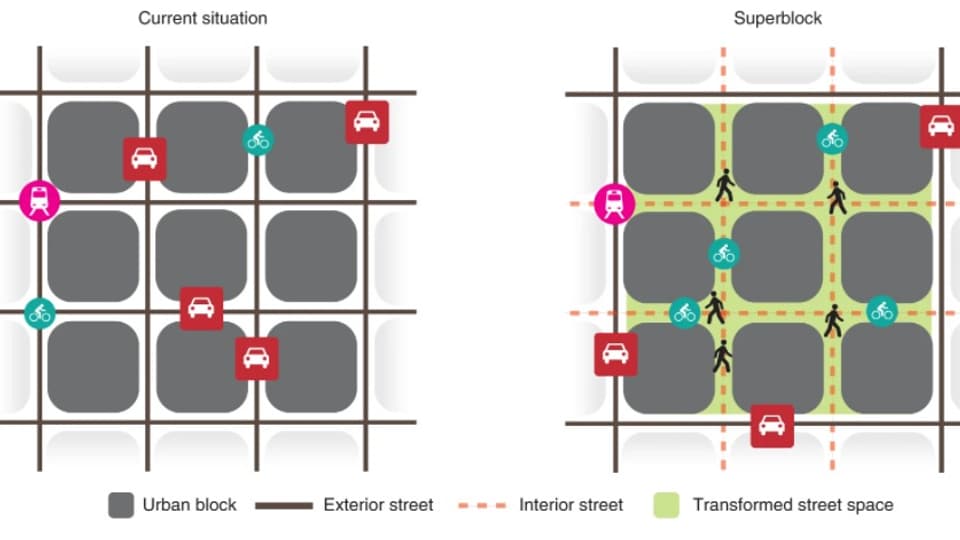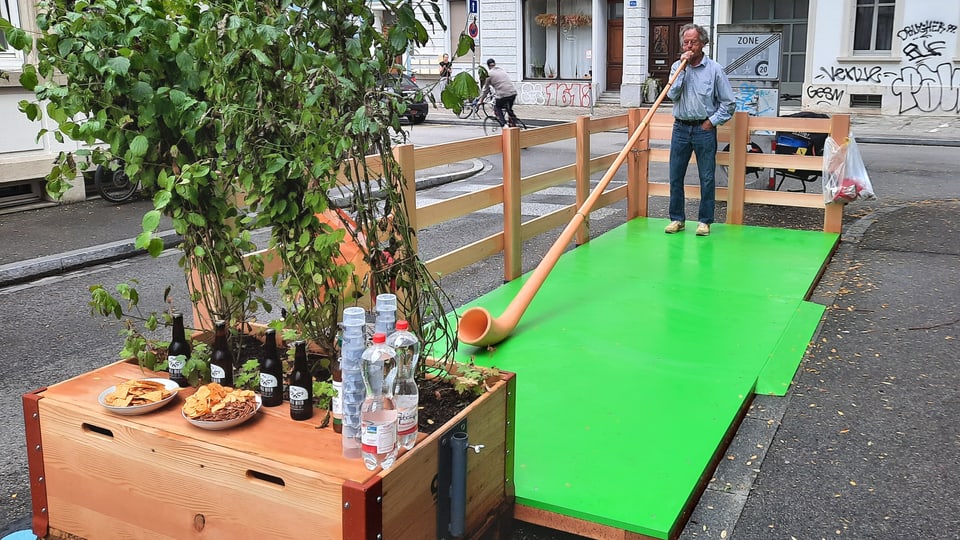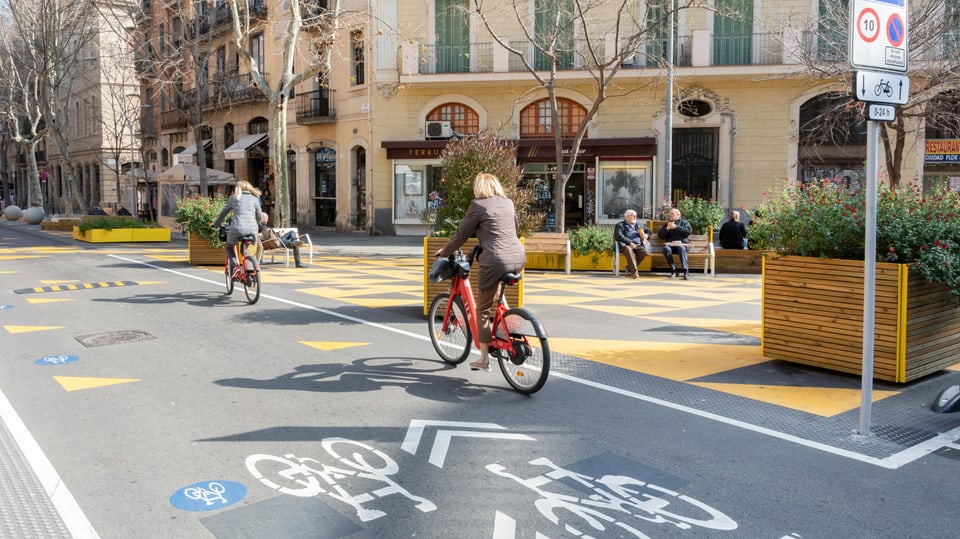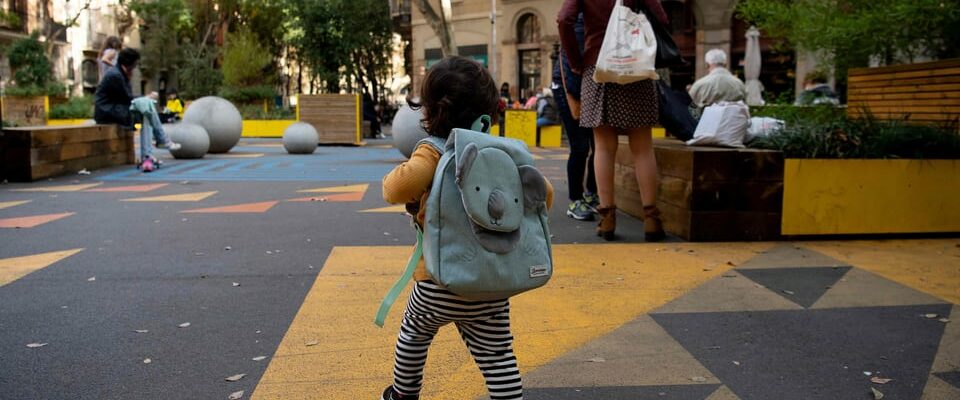Contents
Green neighborhood streets without traffic: The “superblock” idea from Barcelona is setting a precedent in Switzerland. Basel is ahead, where tests are now being set up in two districts.
The idea comes from traffic-plagued cities like Barcelona. The first superblock was built there in 1997: neighborhood streets for lingering and walking instead of driving through and parking, green and lively instead of gray and uncomfortable. Only feeders, such as residents and garbage trucks, have access, and only at walking pace. This is now catching on all over the world, for example in Berlin, Vienna, Rotterdam, Bogotá and Los Angeles.
Swiss cities also like this idea; Zurich and Lucerne, for example, are examining their options. Basel is now getting down to business: Trial superblocks will be set up in two neighborhoods in 2024 and 2025, the Matthäus in Kleinbasel and the St. Johann in Grossbasel. Tar is not yet broken up; For the time being only mobile elements are used.
Legend:
Superblocks make playing safer for children in Barcelona – the neighborhood residents meet on the traffic-free commons.
Keystone/AFP/Josef Lago
These tests are intended to show how the Catalan model can be implemented in the conditions on the Rhine bend. What has proven itself in practice should be implemented more widely in the future. The aim is to use the experience with the two pilot superblocks to present a concept to the Basel parliament that will one day apply to the entire city.
The Basel city presidential department has had corresponding demands from the population and politicians on the table for a long time. These neighborhoods were also chosen because there are already meeting areas there that you can build on.
Some people in the Wettstein district are disappointed, where calls for a superblock were also made early on, but this was not initially implemented. And as the city becomes more dense, interest is likely to increase.
The aim is sustainable development; it’s about quality of life for everyone.
Catherine Heinzer, co-project manager in the urban development department of the Basel city presidential department, refers to Superblocks to the canton’s net zero target by 2037. “We have a lot of strategies and concepts that also support this approach – in the sense of sustainable development, which is about quality of life for everyone.”

Legend:
Barcelona’s superblock concept typically covers three by three blocks, or the streets in between.
EMPA
One of the sticking points is the parking spaces: In superblocks, not only is driving in undesirable, but also parking. Public space should serve the entire population. However, in Basel and Zurich, more than half of the city households do not have their own car.

Legend:
There was a small foretaste of superblocks in Basel last year with the so-called “Summeregge”. Parking spaces were temporarily transformed into meeting areas – with aperitif potential.
zvg/Cantonal and Urban Development Basel-Stadt
One of the questions that the Basel pilot blocks are intended to answer is whether traffic will be diverted with superblocks or whether it will ultimately decrease. What these will look like in concrete terms will only be published at information events at the beginning of March.
Zurich is also there
In Zurich, the city administration has political demands on the table for “neighborhood blocks” that correspond to superblocks. This concept, which only affects municipal roads, was included in the master plan. According to the civil engineering department, the search for suitable quarters is still ongoing. It is realistic to implement the first pilot projects in 2025.

Legend:
Superblocks in Barcelona are permeable to bicycles – but only at walking pace. A maximum of 10 km/h is permitted so that pedestrians can circulate safely.
Keystone/LAIF/Gunnar Knechtel
The geographer Sven Eggimann has in one Study from 2022 compared the nine largest Swiss cities and examined them for superblock suitability. With a view to street areas and existing green areas, he sees the greatest potential in Basel and Geneva. According to his data, Basel has the most, with 18 percent of reusable streets, while Lugano and Lausanne have the least at 3 percent.
